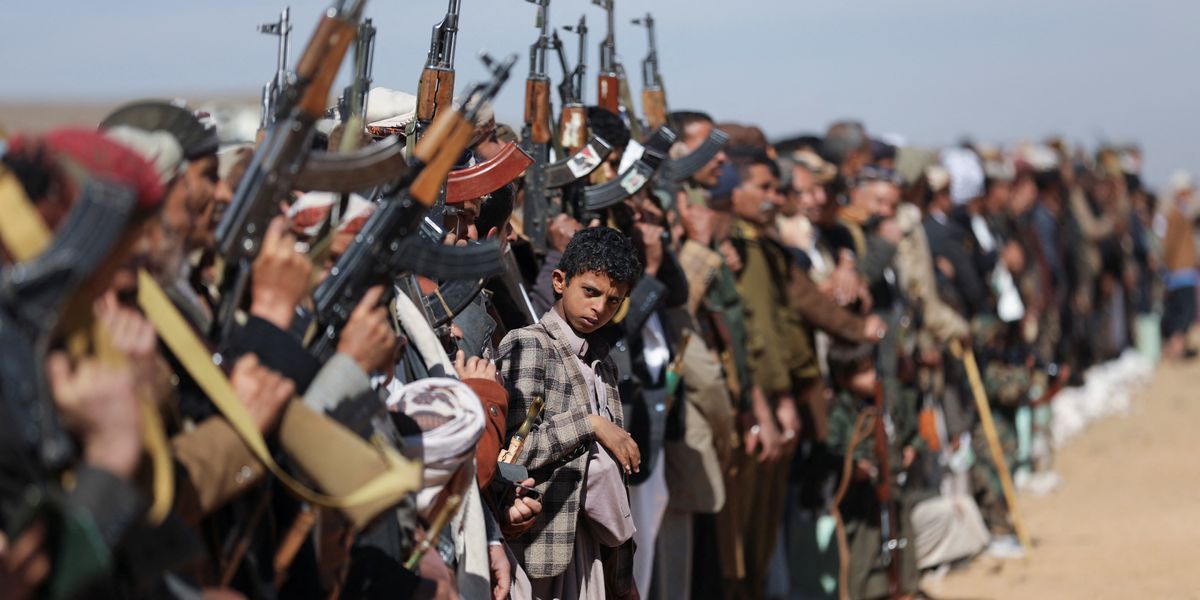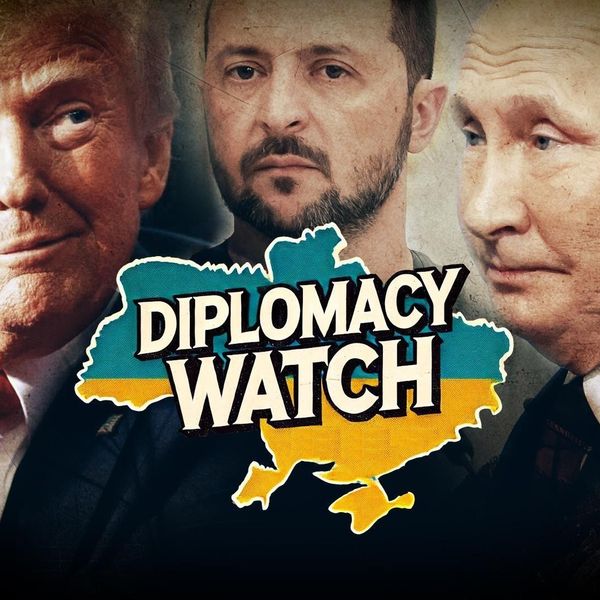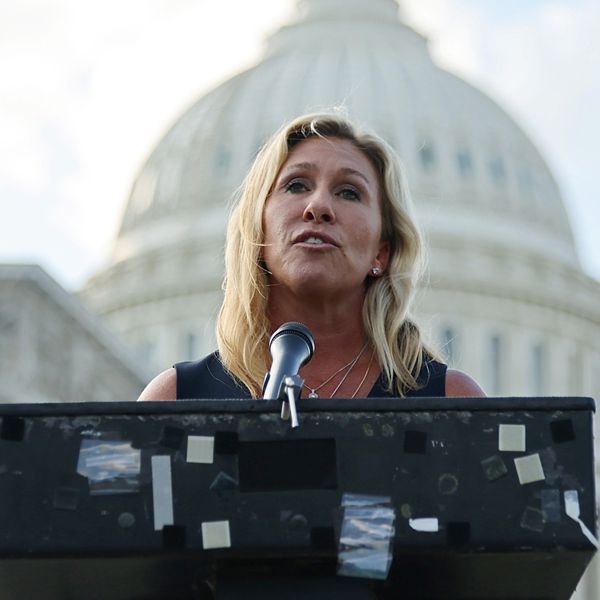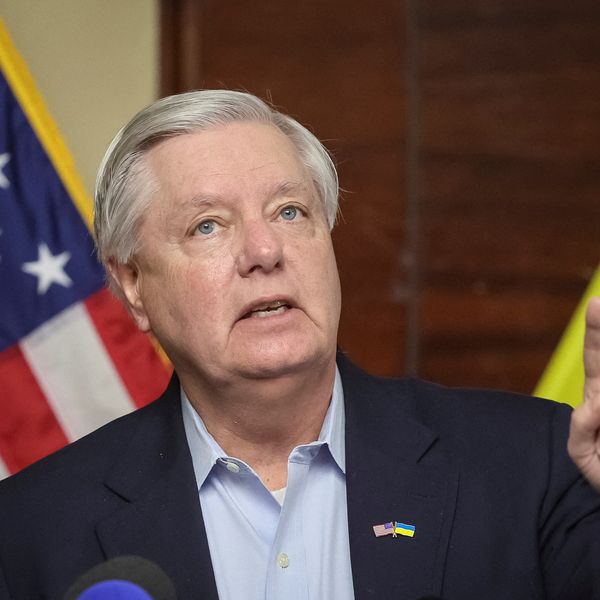The Houthi attacks on vessels in the Red Sea and their missile and drone launches toward Israel have gone a long way to restoring a sense of national pride among many Yemenis. This, combined with growing support from other political groups within Yemen, and in the region, mean attacks will not likely end soon — despite sustained U.S. airstrikes against them.
Since January 13, the U.S. and the UK have carried out eight rounds of strikes on targets in Houthi-controlled northwest Yemen. This followed multiple warnings by Washington for the Houthis to end their attacks on ships in the Red Sea and the Gulf of Aden. There are now indications that the Biden administration is preparing to carry out airstrikes for an indefinite period whilst expanding the target list.
Sustained airstrikes will slowly degrade some of the Houthis’ military capacity, especially their ability to launch anti-ship missiles. However, they will do little to stop the groups’s use of one-way attack drones (OADs) and marine mines to target ships.
The OADs and the facilities used to manufacture and assemble them are spread across northwest Yemen. Most of these facilities are either underground or located in dense urban areas. Even with a continued air campaign against them, the Houthis are in a position to keep menacing international shipping with OADs and mines for months if not years.
Most significantly, Western airstrikes risk strengthening the Houthis’ grip on power. Many of the Houthis’ former enemies are openly and covertly expressing their support for the group now. The Houthi attacks on what they describe as Israeli and U.S.-vessels resonates with many Yemenis, and indeed, many people around the world who are decrying the Israeli actions in Gaza.
Meanwhile, hundreds of thousands of Yemenis routinely gather on Fridays in the capital of Sana’a to protest the Israeli invasion of Gaza and, more recently, U.S. and UK airstrikes. From the perspective of many Yemenis, the Houthis possess the moral high-ground, and the power of that narrative, regardless of its veracity, should not be underestimated.
The Houthis’ determination to lift the siege of Gaza of course is replete with irony given that they persist in blockading the Yemeni city of Taiz.
However, the Houthis’ domestic enemies are not making the mistake of underestimating the power of the Houthi narrative. There are indications that oppositional figures, from members of Islah to tribes and sections of tribes in contested areas, are aligning with them. Multiple Yemeni analysts and former government officials speaking to this author indicated that some factions within Islah are now providing material support to the Houthis in the form of weapons transfers.
Arms smuggling is big business in Yemen. Almost all armed groups regardless of their political alignment are involved in facilitating the movement of arms and materiel into, around, and out of Yemen. It is noteworthy that the majority of the Houthis’ imported weapons, as well as parts and components for their missile and drone programs, transit territory under the nominal control of Yemen’s internationally recognized government (IRG).
Endemic corruption and incompetence among the Houthis’ primary domestic foes have, more than any other factor, contributed to their rise to power and to their continuing grip on power. The IRG’s inability to grapple with corruption, including the arms trade, and provide predictable levels of security consistently undermines its authority.
By comparison, Houthi-controlled areas are generally more secure and enjoy greater levels of predictability. However, this comes at a cost. The Houthis’ various security services are harsh, they routinely arrest and torture opponents, and they often act with impunity. The Houthis also routinely seize businesses and property and are also engaged in illicit trade of all kinds. However, in comparison with many of their foes, corruption within Houthi-controlled areas generally serves the Houthi organization as a whole rather than particular individuals.
While U.S.-led airstrikes may be justifiable, they do nothing to address the fundamental and growing power and reputational imbalances between the Houthis and their domestic rivals. Instead, airstrikes risk exacerbating these imbalances by compelling more militias to align themselves with the Houthis who are increasingly viewed as victors over not only Saudi Arabia, but also over much of the West.
The Houthis’ major rivals in Yemen are struggling with how to align themselves against what are viewed as Israeli atrocities in Gaza and now U.S./ UK airstrikes, while maintaining their opposition to the Houthis. The IRG, the Southern Transitional Council (STC), and Tariq Saleh’s National Resistance Forces (NRF) are all finding it difficult to create narratives can simultaneously condemn Israeli actions in Gaza and the Houthis’ attacks on shipping.
U.S.-led airstrikes on targets in Houthi-controlled Yemen have greatly complicated matters for all of the Houthis’ domestic rivals. The acceptance of U.S. military aid—nothing remains secret in Yemen for long—much less the covert or overt presence of U.S. soldiers or contractors in areas controlled by the STC, IRG, and or the NRF could lead to them being painted as Washington collaborators and, by extension, linked to Israel.
The only long-term answer to mitigating the threat posed by the Houthis are measured, monitored, and carefully designed programs that slowly build the capacity of viable IRG-linked forces to check the Houthis with both better governance and effective well-led fighting forces. But such programs are exceedingly difficult to execute in the current environment.
Saudi Arabia and the United Arab Emirates both provided hundreds of millions of dollars in funding, arms, and training for the various armed groups aligned with the IRG. In some cases, especially in the Hadramawt and in parts of Yemen’s southern Red Sea coast with the NRF, effective fighting forces were developed. However, by and large, there is little to show for Saudi and Emirati efforts. This is why both countries, but especially Saudi Arabia, have curtailed funding and support for their various proxies.
In fact, Saudi Arabia has moved away from any kinetic involvement in Yemen. This is partly the result of Saudi Arabia’s inability to get the IRG and aligned militias to fundamentally reform. It is also partly due to the Houthis’ ability to target Saudi Arabia with drones and missiles. Instead of pouring more money into the black hole that is a war in Yemen, Riyadh is returning to its tried-and-tested policy of appeasement, tribal engagement, and the cultivation of long-term assets in Yemen.
The Saudis have already effectively made their peace with the Houthis. It is notable that the Houthis are no longer launching cross-border attacks on Saudi Arabia and Saudi Arabia is not allowing its airspace to be used for any attacks on Houthi targets. Saudi Arabia’s intervention in Yemen achieved none of the stated aims, and the Saudis, indeed the world, are now grappling with the blowback.
Military engagement alone will not defeat the Houthis. Their ancestors fought off the Ottoman Turks multiple times, the Egyptians, the government of Ali Abdullah Saleh, and the Saudis. They possess an innate understanding of what T.E. Lawrence came to understand: Maximum disorder is its equilibrium.
Mitigating the threat posed by the Houthis will take years of careful engagement with communities and groups that oppose them, while also forcing the IRG and aligned forces to develop cohesive chains of command, counter corruption, and to meaningfully build governmental capacity.
If the IRG and the other opposition groups do not reform and develop the capacity to consistently govern, no amount of support from external backers will prevent them from being defeated by the Houthis and their growing list of new allies in the years ahead.
- Are Houthi attacks doing that much damage to the world economy? | Responsible Statecraft ›
- Houthis were seconds away from hitting US destroyer: Report | Responsible Statecraft ›
- Are the Houthis winning in the Red Sea? | Responsible Statecraft ›
- Houthis only emboldened by Israeli attacks | Responsible Statecraft ›














